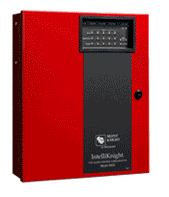Futuristic Developments In Fire Alarms
 Fire alarm technology has advanced so much leading to enhanced protection to occupants and property. This has also given way to reducing expenses and enabling the management of buildings to monitor and maintain their systems well. Here are some new trends in fire alarm Austin systems.
Fire alarm technology has advanced so much leading to enhanced protection to occupants and property. This has also given way to reducing expenses and enabling the management of buildings to monitor and maintain their systems well. Here are some new trends in fire alarm Austin systems.
Phased-in methodology
Along with the fire-safety engineers and technology experts, prop0erties that exist today are requiring system upgrades to phase-in new technology. Usually multi-phased projects can extend from one year to five years or sometimes more depending on the size of the project and the complexity of the upgrade intended. Smart facility managers are these days achieving better budget by spacing it out over time in terms of minimizing the labor and materials costs and also preventing any disruption to the continuity of the business.
Economy of installation
The fire alarm systems we find today feature unbelievable backward compatibility features. This technology facilitates replacing the head-end fire alarm control panel and connecting it to the present detection and notification devices with the help of the existing wires.
Scalability of the detectors
New systems provide more capacity to permit for the growth of the facility besides adding more number of field devices. Over a period of time, you can also choose to replace any of the older field devices and the facilities can also benefit from the modernized multi-criteria detectors that can compare diverse kinds of elements including infrared, heat, carbon monoxide and light in order to sense the presence of smoke through different kinds of inputs.
Widening the capabilities
You can set the multi-criteria detectors to different kinds of sensitivity besides programming it to sound only a local alert. This will enable the security management personnel double check the cause of alarm before sounding a general evacuation alarm throughout the campus. At the same time, the fire alarm can be programmed to initiate a complete evacuation when several detectors are triggered within an area.
Extension of the detection features
These days we find devices that can monitor both smoke and CO. Several facilities including dormitories, schools, commercial sleep occupancies and nursing homes need to detect CO besides detecting the traditional smoke. If separate detectors must be used, then the installation process will need making four holes for the detectors and sounders. All of them have to be wired meaning incurring additional costs on labor.
Advantages of dual sensing unit
A dual sensing unit will need not more than two boxes while one is used for the detector and the other for the sounder. The sounders can help make out the difference between a CO alarm and a smoke alarms and can give out the signal that is appropriate to the incident. The dual fire and CO sensing detectors can significantly bring down the time and costs of the overall installation. It is possible to minimize the effects on the room aesthetics as well. Most importantly, they can very well meet the requirements of the CO detection systems that are mandated by increasing number of provinces today.
Comments
Post a Comment